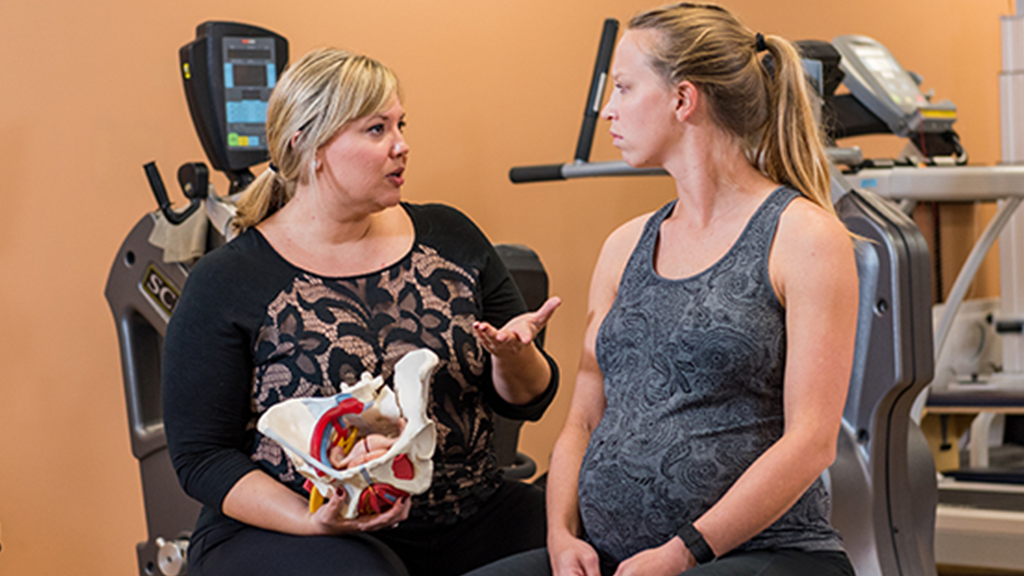Retraining Pelvic Floor Muscles

Back to physical health resource hub
Pelvic floor muscle trauma is typically related to childbirth and vaginal delivery trauma associated with the use of an instrument, tearing or an episiotomy, and nerve trauma related to traction or compression. The pelvic floor musculature can also be impacted by pregnancy, aging, and other lifestyle or co-morbid factors such as smoking, obesity and respiratory disorders. As women age and go through menopause, there is a significant decrease in estrogen which can lead to vaginal atrophy including dryness, decreased health and vascularity of the tissues and decreased pelvic floor muscle function. Common pelvic floor muscle dysfunctions, as a result of pelvic floor trauma, can include urinary incontinence (involuntary loss of urine), pelvic organ prolapse (decreased support of pelvic organs such as bladder, uterus and rectum), bowel dysfunctions such as fecal incontinence (involuntary loss of feces) or constipation, and sexual dysfunction including painful intercourse.
In the United States, urinary incontinence (UI) can affect 15-69% of women and 5-24% of men. Increasing age is a risk factor for UI, and research shows that individuals 65 years of age and older are 6.24 times more likely to experience UI. The prevalence of sexual dysfunction, which includes disorders of sexual arousal, desire, orgasm and/or pain, can range from 25 to 63%. The most effective treatments to address and manage the above mentioned pelvic floor muscle dysfunctions include pelvic floor muscle training, an individualized pelvic floor exercise program, patient education on behavior management strategies, and supportive devices.
Many women and men do not know how to correctly engage and contract the pelvic floor muscles (vaginal and rectal muscles). Patients can be trained on how to successfully contract and relax their pelvic floor muscles and then facilitate training to restore pelvic floor muscle function. Patient education can include healthy bladder/bowel habits, posture and body mechanics, behavior management strategies on how to maintain continence or to decrease pain, and these are essential in addressing any pelvic floor muscle dysfunction. Lastly, an individualized exercise program will promote success with the management of the patient’s symptoms, independence and return to the daily activities they enjoy. A physical therapist, who specializes in pelvic floor rehabilitation, will be able to perform a thorough examination and evaluation to determine the pelvic floor muscle dysfunction involved and then develop an appropriate individualized plan of care for treatment and to achieve the patient’s goals.
To make an appointment with a specialized therapist at Brooks, call or (904) 345-7277.


